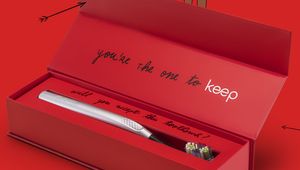
How the UEFA EURO 2024 Branding Reflects Football’s Unifying Power

As an English football fan, the pain of our defeat at EURO 2020 still stings a bit, but it’s time to move forward and look to the future (yes, even Italians - you’ve had your fun). In that spirit, last week, the brand identity for UEFA EURO 2024 was unveiled at the Olympiastadion in Berlin, Germany, where the tournament will be held across ten cities.
The central theme of the new brand identity is a EURO tournament that welcomes everyone and celebrates diversity. The aim of the brand and launch campaign was to create a sense of belonging in the welcoming host nation of Germany.
VMLY&R designed the new logo - cleverly incorporating all of UEFA’s 55 member associations’ flags and their respective colours, assembled in various combinations, and reflecting the shape of the Olympiastadion roof, which will be the home of football in 2024. A unique font was developed considering all European alphabets from its inception, unlike the usual process of adapting a font once it’s finished. And this was all topped off by a brand film, further demonstrating the spirit of the upcoming event.
LBB’s Alex Reeves spoke to VMLY&R branding creative director Hélder Pombinho to find out more about how his team approached this large-scale job.

LBB> What were your initial thoughts when you started working with UEFA on branding EURO 2024... that's a big brief!
Hélder> It is a big brief, it's a challenge that takes time and craft, but it's also an inspiring opportunity. As a branding team, having the chance to create something with this much visibility and with such passionate fans is worth every minute. This wasn't our first tournament brand. And in a way, the challenge was even bigger this time around: we wanted to step up from what we had done for UEFA EURO 2020 and UEFA Nations League.

LBB> Where did you start in terms of aspects of the tournament you wanted to highlight and focus on?
Hélder> After UEFA EURO 2020 had been all over Europe, 2024 couldn't go back to how things were and how the previous tournament brands felt. We knew from the brief that Germany wanted to invite everyone in, for the event to be about the fans and the 55 European Football Associations, instead of just the host country. We also wanted to share the feeling that football has this power to unite, to bring us all together in celebration, like no other sport in Europe.

LBB> And how did it evolve from there?
Hélder> We started by looking for ways to represent the 55 member associations and realised that we could represent their flags with six colours.
Then we searched for German monuments or symbols that could represent the country and its inviting spirit. We noticed that the Olympiastadion, from a birds' eye view, had an interesting shape. Unlike most stadiums, it's not closed. It has a wide, inviting opening that also fits the silhouette of the trophy.

LBB> From a design perspective, what inspired the look?
Hélder> We used the Olympiastadion's slices and filled them with our brand's colours, the six main colours that represent every member association's flag. It created an abstract representation of diversity and inclusivity, which is uncommon with tournament brands. We also created patterns inspired by what makes up the stadium: the field, the celebration and the sport.

LBB> What aspects of the host nation of Germany guided the brand identity?
Hélder> Germany is a very inclusive, multicultural nation. It wanted to highlight its hospitality and friendliness as well as its ability to make EURO 2024 the biggest celebration ever for football fans. We wanted to create a brand identity that felt like Germany but belonged to everyone. That showed all fans how they have the most critical role in this tournament.

LBB> And what was the significance of the Olympiastadion to the work?
Hélder> Knowing that Germany wanted to invite and welcome every football fan, we wanted to create a symbolic place for everyone to belong while proving football is the sport that can bring us together. We used the stadium as this "home".

LBB> As you said a key focus was diversity and inclusion. How did you make sure you hit the right notes on that front?
Hélder> Although we had a brand with abstract elements, we realised that we needed to include diversity and festivity while also humanising our visual language. We did so in the fans' illustrations. Not only to show how incredibly diverse football fans are but also that they are the true heroes of this event.
We wanted to include as much variety as possible without using stereotypes so, we used real people as inspiration for our fan illustrations.

LBB> This brand identity has almost three years to live and play out before the tournament. What role are you most excited about seeing it play in that time? How do you think people will engage with and react to it?
Hélder> This brand is, first and foremost, an invitation. We want to see fans accepting it, engaging with it, and feeling like they are being seen through it. We want the branding to feel like a new era for EURO, one that is as much about the game as the unifying power of football.















